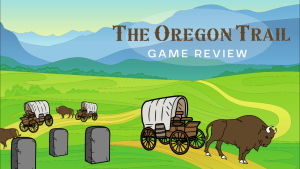Students will have the option to continue on path with the current 50-credit-hour core or switch to the new 39-credit-hour core, once Fall 2014 rolls around.
Co-chair of the Core Implementation Task Force Kathy Rodgers said the new core is right on schedule and they’ve made excellent progress.
The University Core Council is currently “populating the new core,” which means faculty is in the process of submitting petitions for courses to be added to the core.
In some cases, courses have to be changed to meet the requests, which mean the courses have to go back to the University Curriculum Committee. That part of the work is probably only about 15 percent complete, Rodgers said.
Courses receive final approval from the Provost’s office.
The Implementation Task Force has reached out to the Marketing Club at USI to create a name for the new core.
“For a time being, we’re going to have a new core and an old core,” Rodgers said. “We could (keep) call(ing) them new and old, but we’d like to do something maybe just a little fancier than that.”
The new core does not have to be ready for more than a year.
“Because we started early, we’ve had the opportunity to really discuss items, leave, and come back and discuss them again,” Rodgers said. “We’ve been able to get input from our colleagues and make sure that we are meeting the needs of all of our students.”
Using a document provided by the Review Task Force, the Implementation Task Force had to go through and write guidelines for implementation. The goal was to clarify anything that didn’t seem clear, she said.
In the midst of planning the new core, the state issued a general education requirement where all public universities must offer 30 transferable credit hours.
The Implementation Task Force had to make sure they matched their learning outcomes with the state’s outcomes, she said.
“USI was right on board with doing that,” Rodgers said. “We had faculty that had participation in the faculty panels at the state level. So we helped write those state learning outcomes, brought them back, and meshed them with ours to make sure we were meeting them.”
She said the implementation part of the process is about 80 percent complete.
The current core has lasted more than 15 years, and this one probably will too, she said.
“When we look at core courses, we see those as the courses we want to have that will make students educated individuals,” Rodgers said. “The time we’re living in now is not the same as it was 15 years ago, and we wanted to make sure we were still meeting the needs of our students.”
She said they think there is a greater emphasis on diversity and global experiences than there were before. They also think there is a greater need for foreign languages than there once was.
“We didn’t like this idea of ‘I want to get my core out of the way,’” Rodgers said. “We wanted the core to have more verticality. In other words, we wanted it to build on things.”
They also wanted to clear up some hours for students who might want two minors or students who have extensive major requirements and no room for a minor at all.
“Students should not only get depth but they should (also) get a certain amount of breadth,” Rodgers said.
They’ve stumbled upon a few obstacles during their efforts.
“Great minds don’t all think alike,” Rodgers said. “We all have different opinions about what should be in the core. Hopefully what is really best is what falls out at the end.”
So far, it is clear the new core will continue to require English 101 and 201, a communications course, and a math course, as well as a wellness course and an activities course. A first-year experience course is being added to the fundamental requirements.
Students will have a variety of options depending on whether they choose the Bachelor of Arts or the Bachelor of Science path.
Currently, the only difference is the foreign language requirement. With the new core, the degree a student chooses decides how many science courses they have to take. Currently, everyone has to take two labs or one lab and two lectures.
With the new core, a Bachelor of Arts will require one science course with a lab and three foreign language courses. The Bachelor of Science will require one foreign language course, one science course with a lab, one science lecture and one social science course.
Students will choose four courses from six “Ways of Knowing” categories: Creative and Aesthetic Expression, Historical Inquiry, Moral and Ethical Reasoning, Scientific and Mathematical Inquiry, Social Inquiry, and World Languages and Culture.
Each of the four courses must be from a different category. Courses in those categories are to be determined.
The new core will require four “Embedded Experience” courses, which can be taken in the student’s major or in the “Ways of Knowing” part of the core and will not count toward the 39 credit hours.
Students who opt to complete the new core will have a greater variety of options and a smaller core load. However, if they make the switch to the new core, they have to make the switch to the most updated version of their major. So, if requirements in their major changed, they would also have to meet those new requirements.
It will not affect any current student who does not want to make the switch.
Freshman Spanish major Alyssa Hoogewerf said she will not make the switch to the new core.
“I’m pretty far ahead, and I’ll be done with the core by the end of the summer,” she said.
Hoogewerf said it’s confusing and she hopes the university makes some sort of chart comparing the current requirements and the new requirements.
“They should make a chart tailored to each major that will be affected, too,” she said.
She does like that the new core will offer more options, she said.
“I’m a Spanish major, so I don’t need all the science that’s required,” Hoogewerf said. “I do like that it seems like with the new core there will be less stiffy requirements.”
Students entering the university in the Fall of 2014 or later will be required to complete the new core.






